To Love and Find Love in the Harshest Place on Earth
Emperor penguins undergo the harshest test of love
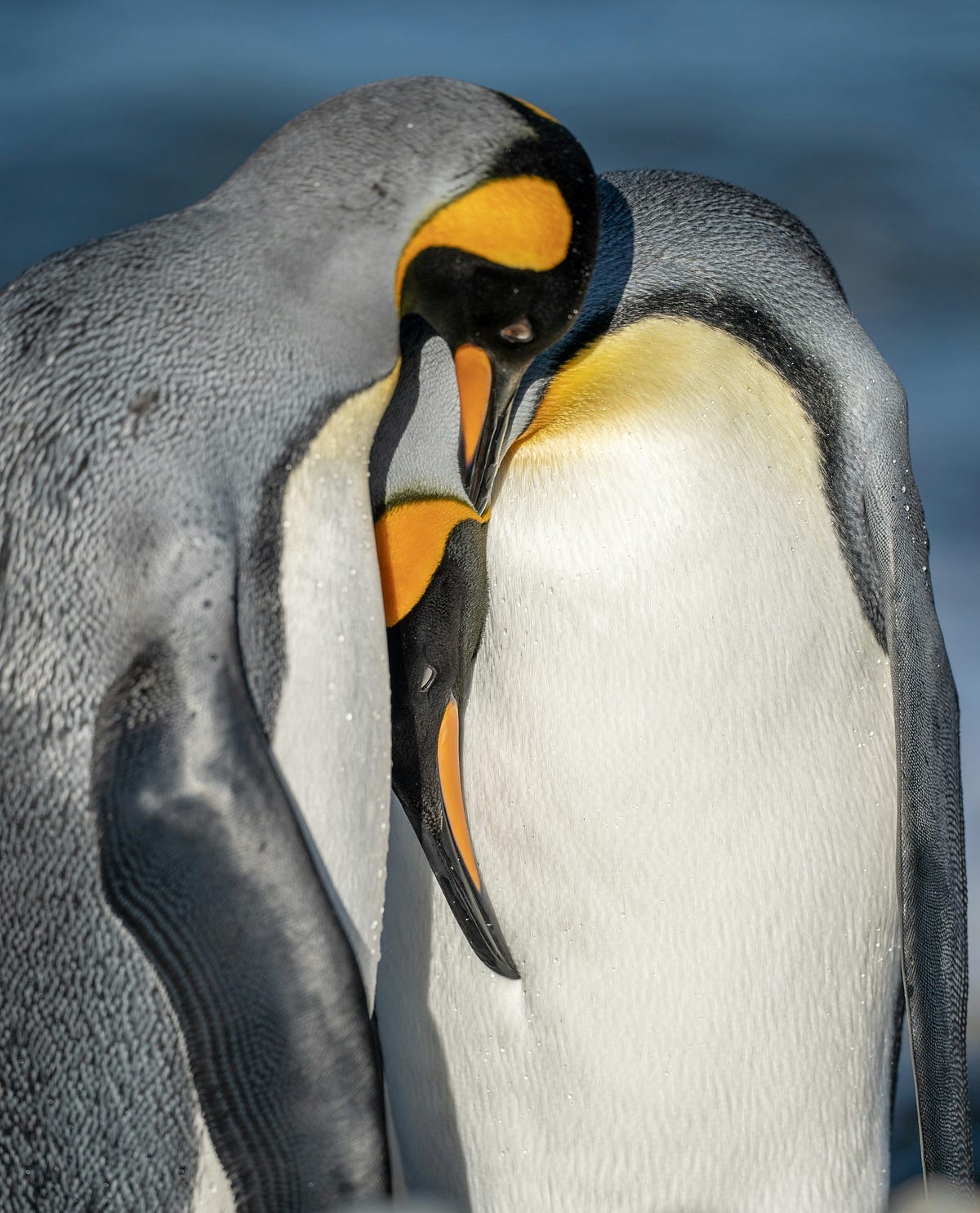
The Titanic, The Notebook, and Me Before You are classic love stories captured in film.
They are relatable, deeply moving, and suffused with loss enough to remind us how inextricably linked we are to love.
But while these cinematic pieces are moving, at the South Pole exists a rare species whose love stories don’t get enough airplay. Emperor penguins have learned to love tenaciously despite nature’s hurling its harsh elements at them.
For instance, they have stuck around Antarctica despite winters that can go to negative 50 degrees Celsius and winds blowing up to 200 km/h. Love, however, finds a way.
While most of the species in Antarctica have gone extinct or migrated to other continents, these black, white, and a stripe of yellowish-orange birds remained home. Their story deserves your attention as it is one of nature’s most moving examples of what love endures.
They are the misfits who stayed home to give us a taste of what it means to fight for love.
Couple up
If the world was ending, I’d wanna be next to you
— Bruno Mars and Lady Gaga
The journey starts four years after they have swum and honed their agility inside water until they attained maturity. They then hop out of the ocean onto the concrete ice, flap, ruffle their feathers, catch up, and wait for everyone to join the marching party.
They have spent most of their lives in water, but for the next set of weeks, they will endure it on land. Icy, windy, and chilly land.
Their feet are covered with rich pads of fat and tough scales to prevent them from frostbite. They’ll need it for what will come next.
Once they have made a rough estimate that everyone is aboard, the march begins on their feet and when exhausted, with their bellies. They walk for around over 100 km to the original breeding spot where they were all born.
Colonies surrounding the icy continent meet along the way and form a long train back home. The kind of train they make reminds me of my days in primary school.
Wednesday afternoon was sports day. Our teachers would insist we walk in a single file from where our classes were to the sports ground. We would walk up the hill and cross two roads, one busier than the other, before reaching our destination. The penguins’ march is similar, but don’t intend to compete in sports. Their goal is to raise a young one.
The ice serves as a unique breeding spot, thick enough to support all the emperor penguins. Once everyone is present, the search for your partner begins. Everyone tries to couple up.
You need to find a partner who understands you. You have little time to establish a meaningful, reliable bond. Each partner will depend on this bond in intimate and intricate ways to raise their chick — if they are to be successful.
The ratio of men to women is often unfavourable. There are more women than men, which can spark fights among the females. The disparity becomes difficult to resolve, but the men wait until the ladies settle their beef.
Some men are older than the rest, which might later become a disadvantage. The same goes for the females because they might not survive the winter. Thus, the first way to seek warmth is by coupling up.
The intimate displays are heartwarming. Standing close to each other, a couple can have their chests and abdomens touching, in silence, eyes closed, beaks obliquely pointed upwards. You can sense they are building a connection at a deeper level, beyond the trigger senses of hearing and seeing. Amid the noise and bustle surrounding them, they stand still soaking in one another.
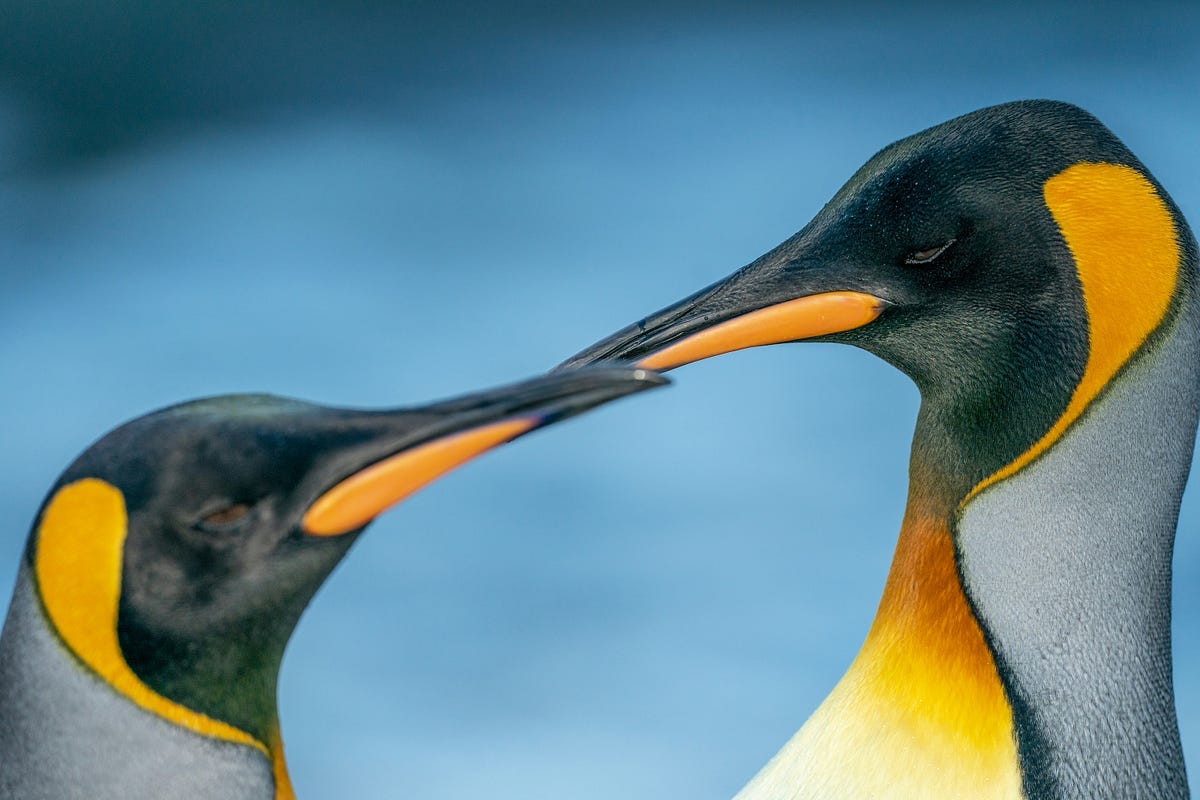
Their bodies are shaped in such a way that you cannot tell where the head ends and where the neck begins. They merge seamlessly into the chest and the chest into the abdomen. So when one cranes its neck downward, so does the other, in silence and with eyes closed.
They must know each other through and through as it will be essential in the weeks to come.
They then mate, sit and wait.
A few weeks after the intimate exchange, the female lays the egg, a single egg. This is housed underneath their feathers, just above their feet, in a warm enclave known as the brood pouch. The species cannot afford to lay more than one as it is physiologically demanding.
The next series of steps are crucial. They practice transferring the egg from the mother’s brood pouch to the father’s. Patience and precision are necessary because a few minutes outside the warm embrace of the parents is enough to silence the heartbeat inside the eggshell.
Other times, the parents could be patient but the landscape couldn’t care less. The egg could roll off. The chilly grip of the winter’s hands would then crack it open as ice does when it meets a fragile object. For such unlucky couples, this marks the end of their struggle, painfully.
The lucky ones, who perfect the transition move to the next step.
When the mom is away
The mother has to leave.
She has to go back to the open water to feed. The costly process of producing an egg cuts her weight by about a third. She leaves the care of the egg to the father. The next level of tests begins.
The mother travels a longer distance than the first time because winter cools the continent’s edges into ice. The sense of urgency also behooves them to move fast. They move in groups as they did when they were headed to the breeding site.
Once they get to open waters, they have to find food. Fast. With the capacity to hold their breath for up to 20 minutes, they feed on anything trapped underneath the ice to creatures on the deep sea floor. These physiological feats are all good, for them and their waiting babies. It is, however, an invitation for predators — leopard seals.
In the hunt to fill their bellies with as much food as possible, they have to evade the fatal jaws of leopard seals. In the hustle, some of them are ensnared. Fathers holding their eggs hoping their partners show up will never hear from them again.
Indeed Bruno Mars and Lady Gaga were right when they sang about loving like there’s no tomorrow because, for these penguins, it just might be the case:
Wherever you go, that’s where I’ll follow
Nobody’s promised tomorrow
So I’ma love you every night like it’s the last night
Like it’s the last night
Meanwhile, these fathers have to brave the blizzards of Antarctica. The cold winds are staggeringly fast and strong enough to destabilize most living creatures. The tapered stature of emperor penguins, and their heavy and broad base help to keep them rooted.
Remember they have to keep the eggs warm.
To achieve this, they huddle in groups. For them to move, they walk on their heels, supported by their tails for balance, and fold their claws inwards to prevent the egg from falling off the brood pouch.
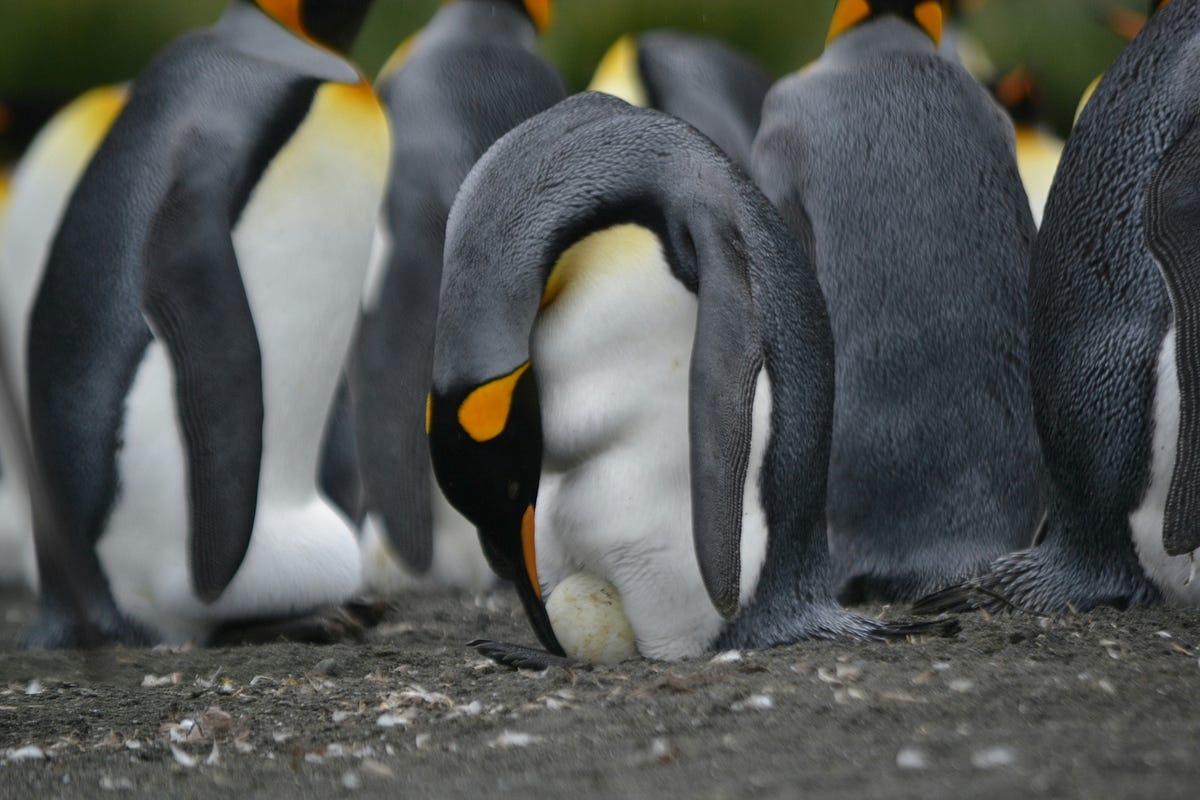
The group they form works through shifts. The ones on the periphery brave the brunt of the harsh winds and after some time, they move closer to the warmer centre. That way, everybody in the group has their share of alternating warmth and cool moments, all in the interest of preserving themselves and their unhatched eggs.
These movements can cause the eggs to slip and face the same fate as those clutched by the chilly grasp of winter’s ice. The additional force in this huddle is the stampede of penguins as they move. Eggs get crushed. Investments go to waste. But a good number survive.
Fathers endure the harsh winds that grow colder every day. Snow blown their way is sometimes used as food, solid crystals, to keep them going.
For the lucky couples, the eggs start to crack open, caving under the forceful, repeated pocking of the chick’s beak. These fathers have successfully brought their chicks to the world. But more tests await.
As they wait for their mothers to come, these chicks risk starvation. Some will die. To help weather this period, fathers regurgitate some milky substance from their throat pockets to keep their hatchlings going.
Meanwhile, the mothers continue their march back with bellies full of food.
When they return, they now have to seek their mates. Their radar is the sound they make. It’s a cacophony of different cries but somehow, they manage to find their partner. This was partly the reason they needed to bond and know each other beyond the shallow, surface level.
Now, the next challenge awaits.
When the dad is away
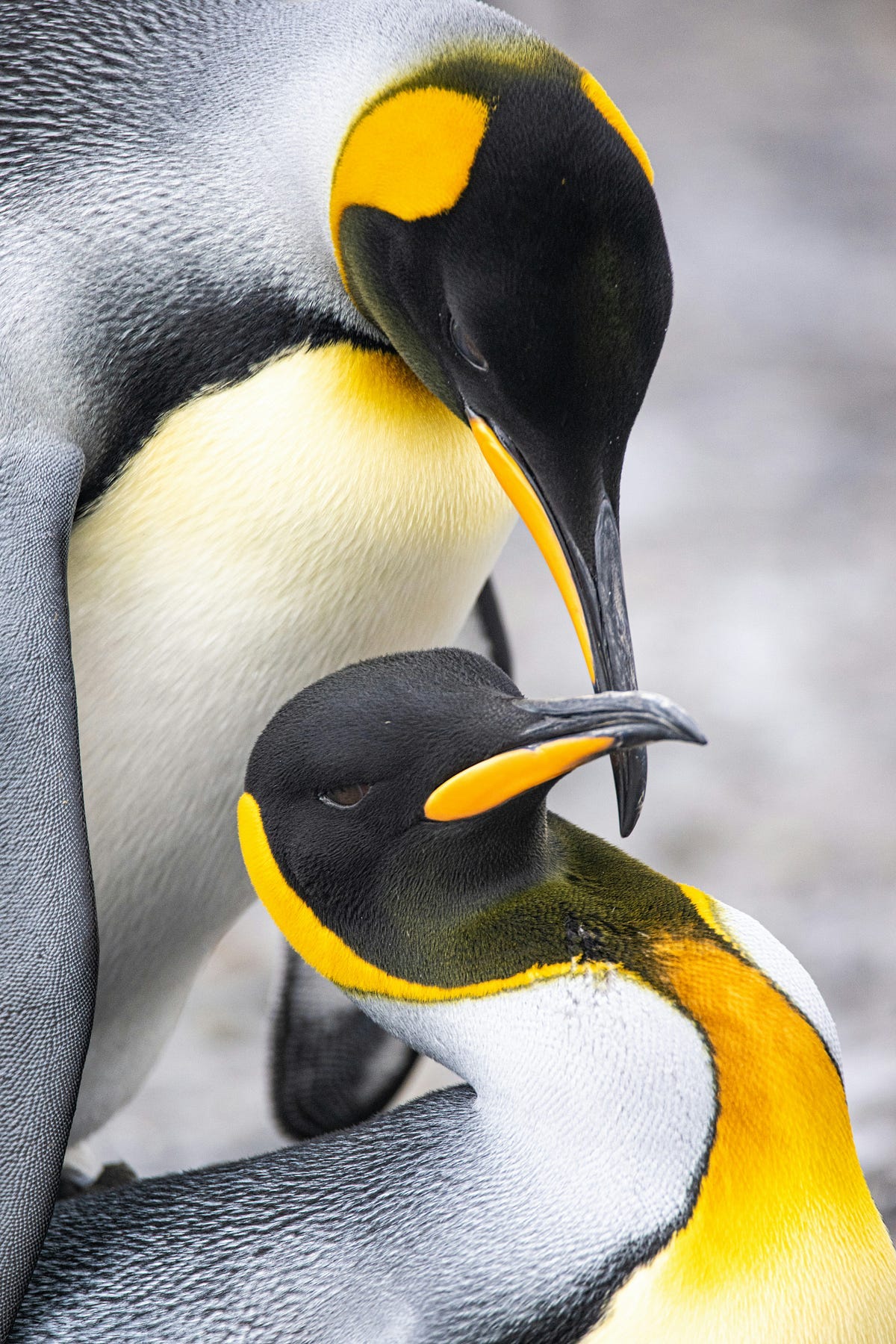
The dads partook in the parental investment from the point the egg was laid to the point of hatching.
Throughout these weeks, they have not fed on a thing besides snow. They also had moments when they shared whatever little they had with their chicks to prevent them from starving.
In the same practiced fashion where they moved the eggs from one partner’s brood pouch to the other, they exchange the chick who still needs the warmth of its parents. This newborn has to develop a bond with the mother because the father too needs to leave.
Before they do, they sing to each other. The father must remember how it sounds because he will rely on it to find them and their mother. Once the father is satisfied, it takes off.
Fathers lose close to half their weight when taking care of the chick before their mothers return. It takes a toll on a good number of them. While headed back to open waters, their resolve is tested.
Some die along the way. This is likely the reason for the skewed number of males in the species — fewer males than females. As for those that make it to the sea, they have an obligation back home.
Meanwhile, the new chick and the mother create a lasting bond as they grow, develop, and increase in strength and vitality. Mothers feed them from their full bellies by regurgitating content into their beaks.
With every sashaying movement of the mom, they learn to mimic the gait until it is time for them to try it out. A little nudge from the mother helps. Practice is essential for when the weather is fair since the blizzards are yet to finish testing them. During such moments, the brood pouch is still their haven.
The mothers, like the fathers, also hurdle together and alternate in movement from the cold peripheries to the warmer centres. Amid these shifts, some of the chicks might yet again fall victim to the harsh elements and die. It is excruciating for the mothers.
It can be so painful that some mothers attempt to kidnap other children. The other mothers in the group, however, fight off such attempts. The unlucky mothers would have to try again the next time. Their reproductive journey ends there.
Other enemies such as the albatross lurk on the continent for the wandering chicks. Albatrosses have their harsh enduring stories too, but in this one, they are the enemies of nurtured love. For the most part, the mothers prevent them from invading their investment.
When the father comes back from his hunting trip, the mothers leave. Week by week, the chicks grow stronger. The alternating shift in parenting between the mother and the father improves as the chicks can now walk.
They walk closer to the water’s edge to make it easier for everyone. For the chicks, they develop strength and stamina. They also get to interact and bond with the other chicks. For the parents, the trips shorten aided by the change in the weather. As the south gets warmer, the water’s edge draws nearer.
There are moments when the family gets to spend more time together, enjoying the easier times now that the traveling distance is shortened and the weather is gentler.
After a year, the parents split up and the chicks are left on the ice caps. As they wait for weeks, they shed their feathers replacing them with the waterproof phenotype.
All the while, they have not tasted the waters where they will spend their next four years. But the time will come when they will have to take the first dive. Sticking together helps for various reasons as was evident at the beginning of this journey — they needed to estimate that everyone was present before starting the march to the breeding site. They too have established such a bond. They were friends from the beginning and among them, beautiful future partnerships will form.
The species acting as an organism
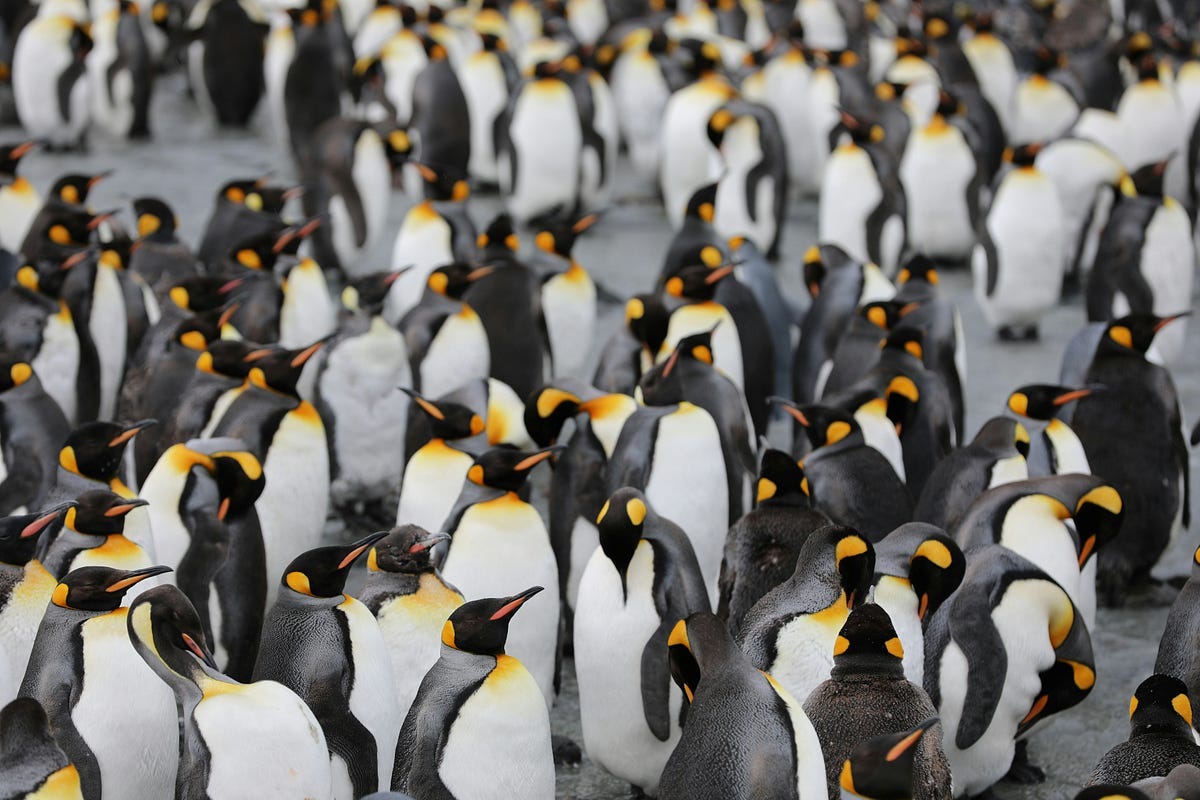
I like to think of the emperor penguins as a single organism for various reasons.
First, they estimate that everyone is out of the water before beginning the march. Those who get left behind eventually die. It is like skin cells that are shed off over time.
The numbers help the penguins trace the original breeding site through the power of distributive knowledge. Since they were all born in the same place, they have an idea of where this place was.
Due to the constantly shifting ice and climate change, a single navigating lead is not enough. There will be moments when they pause to evaluate their next step and where to move. Soon enough, one person picks the trail and the rest follow.
The numbers also help to encourage one another. Walking consistently for over 100 kilometers without feeding after years of buoyant living can be tiring. The numbers can uplift spirits to continue with the march.
The other time when they act as an organism is during the blizzards. These are the times when the ultimate test for an organism is seen.
According to the theory of Organismal Selection, the ultimate test for the existence of an organism is to subject the entity to a form of imminent, credible threat. The blizzards are such threats.
Emperor penguins huddle into a solid form and alternate in shifts from the periphery to the centre in a well-coordinated fashion. This shows how they can create a boundary generated from the same forces operating within it, like the cell.
What preserves these lives is the mergers they form in the presence of such threats. Mergers are the central selling point of Organismal Selection. In the presence of threats, mergers preserve lives.
Mergers are so important that they explain a peculiar behaviour among the penguins. That is, parents who lose their chicks by trying to chicknap others’. This is a strange form of behaviour because it defies the gospel of common evolutionary theories.
Kin selection can explain why the other parents stop the parent from kidnapping. It, however, does not explain why the grieving parent opts to do this in the first place. The chick would have been different from the parent’s lineage. Why chicknap?
Organismal Selection comes to the rescue by outlining the importance of organisms seeking mergers, whether one was kin or not. It therefore explains concepts that Natural Selection cannot.
These mergers are also important when searching for a partner, after alternating turns through continental travels to find food, and when locating one’s family every time they return from a hunt.
These misfits of enduring love have always had something to say about evolutionary trends. Being cooped up in the South could have prevented their stories from being heard.
Mainstream evolutionary theories stress so much on the outcome forgetting the processes leading to these outcomes. It’s always a question of who is the reproductively successful and not the preceding details. Emperor penguins challenge this skewed view of evolution.
Today, they face a greater challenge.
Climate change

Several effects of climate change affect the successful march of the emperor penguins.
The first is the breeding grounds. The ice was a reliable spot because it was thick enough to shelter all of them at once. This ice is now thinning, reducing their survivability
Scientists posit that with the growing trend, the species might go extinct in the next 75 years.
If finding the breeding grounds has always been difficult, breaking ice caps adds more pieces to the puzzle. Since they depend on numbers to identify these grounds, fewer penguins translate to reduced chances of finding their ancestral breeding grounds.
Also, for those who successfully raise the cheeks, their efforts would have been moot. Growing chicks have to stay on ice for their waterproof feathers to form. Thinning of icecaps would prematurely have these penguins diving before they are well adapted to survive underwater.
This will make them easy prey for the lurking sea predators. Some will not be able to survive the unnecessary burden of extra feathers.
All these are projections based on our present understanding of emperor penguins. However, what we fail to factor in is they decided to stay when most organisms fled the south. They might develop new tricks up their feathered sleeves.
As the theory of Organismal Selection insists, organisms tend to avoid annihilation. They can survive, but we should not sit and observe to see what new options they pursue. We can support their home and take part in the production of one of nature’s greatest love stories.
What I’m trying to say is…
The emperor penguins put our love escapades to shame.
They weather long distances and cold, lengthy blizzards without food, and fight off predators and hurt parents in the name of love. Extremely loyal, they co-parent and work as a unit to ensure everyone survives, and unlike common evolutionary theories, they do this whether they reproduce or not.
These misfits of the South Pole have made a home from what was abandoned by the other organisms.
Their world is changing. It’s safe to say it is ending. But we can do something about it by checking our climate-harmful tendencies.
In the name of love, let us try to preserve their home so much that they can espouse the beautiful chorus by Lady Gaga and Bruno Mars:
If the world was ending, I’d wanna be next to you
If the party was over and our time on Earth was through
I’d wanna hold you just for a while and die with a smile
If the world was ending, I’d wanna be next to you
This song inspired some of the lines used in this article. Source — YouTube




Poor penguins (of Madagascar 🤭), they absolutely raised the bar🙌🏼. I like the co-parenting and teamwork.